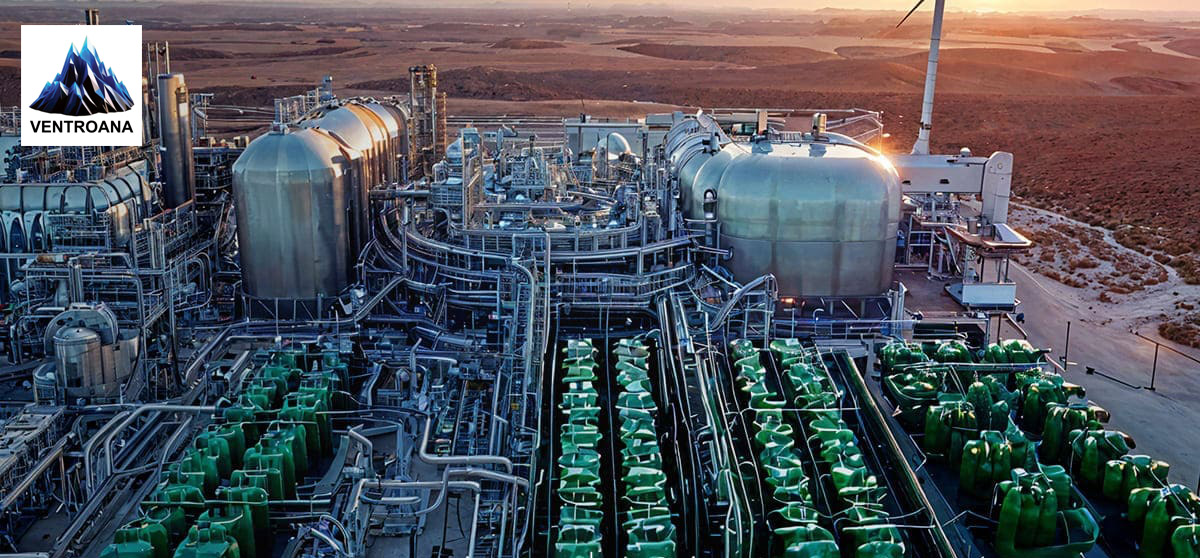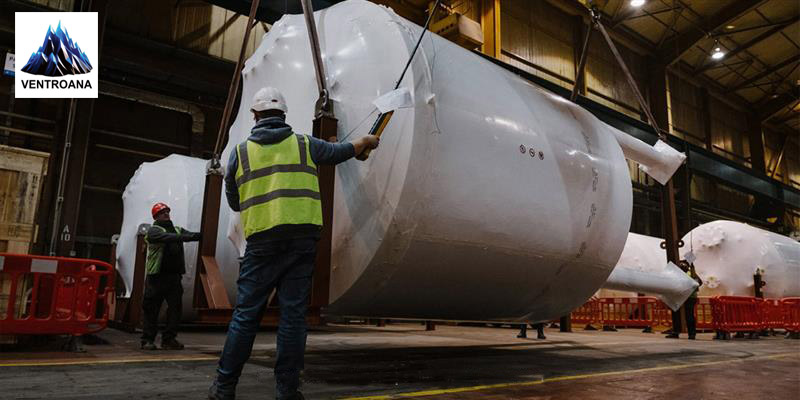Renewables
February 27, 2024

The world is undergoing unprecedented climatic changes, and it is becoming evident that we need to take precautionary actions to control carbon emissions. Net-zero emissions, a state where greenhouse gas emissions are balanced by their removal from the atmosphere, is the target that governments and companies around the world have set to accomplish for themselves.
Achieving this milestone is a prerequisite for the future of the planet and the stability of the global economy. Net Zero by 2050: A Roadmap for the Global Energy Sector, a global scenario report which was published in 2021 by IEA, sets an achievable pathway for the global energy sector to reach net zero emissions by 2050.
One of the key technologies that could play a significant role in reaching net-zero emissions is green hydrogen. Hydrogen is a versatile energy carrier that can be produced from renewable sources without emitting greenhouse gases. Green hydrogen is used as a fuel source in numerous applications, from generating electricity to powering vehicles.
Green hydrogen has the potential to transform the global energy system and help us achieve net-zero emissions. Some of how green hydrogen can play a vital role in the transition to a low-carbon economy are mentioned below.
Heavy industries such as steel, cement, and chemicals are responsible for significant production of global emissions. Green hydrogen offers a clean alternative to fossil fuels, providing a pathway to decarbonize these industries. Moreover, green hydrogen is a highly promising alternative for the heavy industry sectors where there is a complex use of decarbonization and electricity.
One of the challenges of renewable energy sources like wind and solar power is that they are intermittent. Energy storage is therefore essential to ensure a steady supply of electricity. Green hydrogen can be produced during times of excess renewable energy and stored for later use. This allows for a more flexible and reliable energy system, reducing the need for fossil fuel-based backup power. Green hydrogen has great potential and can be a leading option for long-term energy storage solutions.
Transportation is another major source of greenhouse gas emissions. Green hydrogen can be used as fuel for vehicles, offering a clean alternative to gasoline and diesel. Hydrogen fuel cell vehicles emit only water and heat, making them a zero-emission transportation option. Hydrogen can also be used in the shipping and aviation industries, which are particularly challenging to decarbonize.
Green hydrogen can also be used to generate electricity. Hydrogen fuel cells convert the chemical energy stored in hydrogen into electricity and heat, producing no greenhouse gas emissions. Fuel cells can be used to power homes and businesses, providing a clean and reliable source of electricity.
Green hydrogen can also help to enhance energy security by reducing reliance on imported fossil fuels. Many countries are heavily dependent on imported energy. By producing green hydrogen, countries can enhance their energy security and reduce their dependence on foreign sources of energy.
While the potential of green hydrogen is clear, there are still some challenges that need to be addressed. One of the biggest challenges is the cost of production. Currently, green hydrogen is more expensive to produce than hydrogen produced from fossil fuels. However, as renewable energy sources become cheaper, the cost of producing green hydrogen is expected to come down. Another challenge is the lack of infrastructure. Currently, there are limited production and distribution facilities for green hydrogen. However, many governments and companies are investing in the development of green hydrogen infrastructure, which is expected to increase significantly over the coming years.
Reducing the cost of production can be a potential solution to overcome the challenges faced by the green hydrogen industry. There should be ways to develop more efficient and cost-effective electrolyzers which are devices that can split water into hydrogen and oxygen by using electricity. Moreover, companies should invest in renewable energy generation such as solar and wind power sources for increased renewable energy generation which can contribute to reliable green hydrogen production. Companies that promote green energy should invest in green hydrogen infrastructure so that greenhouse emissions can be mitigated, and the milestone of net zero emissions can be achieved.
Green hydrogen can play a significant role in the transition to a low-carbon economy and achieving net-zero emissions. Its versatility and clean energy make it a valuable tool for decarbonizing heavy industries, enabling energy storage, fueling transportation, powering homes and businesses, and enhancing energy security. Some challenges need to be addressed and solutions through which we can overcome challenges and accomplish the target of reaching net zero emissions by 2050.
Tags:

Successful Implementation of Green Hydrogen in Power Plants
Discover how green hydrogen revolutionizes power plants with sustainable energy solutions, reducing ...

Driving Innovation and Resilience: Insights from the 10th Annual Energy Supply C...
Gain insights on driving innovation and resilience at the 10th Energy Supply Chain & Procurement Sum...

Understanding EPC Engineering: Key Concepts Explained
Discover the essentials of EPC Engineering, covering contracts, project phases, and roles of EPC con...